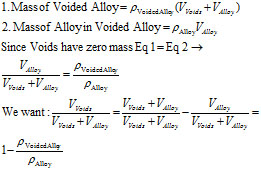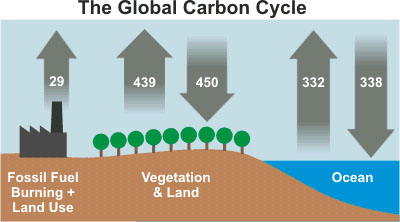Folks,
A reader writes:
Dear Dr. Ron, I need to measure the void content of an alloy. Is there an easy way to do it?
After a little thought, it occurred to me that the densities of the voided and unvoided material will likely hold the answer. I derived the result below. Assuming we know the density of the unvoided material, we can measure the density of the voided material with the Wet Gold Technique, discussed in recent posts, if the voids are not connected (closed cell.) If the voids are connected (open cell), you could machine the foam to the shape of a rectangular parallelepiped and determine the density of the foam as the mass divided by the volume.
As an example, let’s say you have a closed cell aluminum foam. We use the wet gold technique to measure its density at 1.5g/cc. The density of solid Al is 2.7g/cc.
So the volume fraction of voids is:
Sadly, this technique could not be used to find void content in solder joints, or in BTC (e.g. QFN) thermal pad connections (which are so handily mitigated by using solder preforms.)
: : : : : : :
Global Warming Musings: My recent post on GW generated many comments. I will be sharing additional reasons why I am a skeptic at the end of posts like the one above.
It is important to state the distinction between a GW Skeptic (me) and a GW Denier. As a Skeptic, I am not convinced that the warming trends are alarming or unusual, especially since the atmosphere has not warmed in more than a decade. Also, I am not convinced that the main driving force for the warming trend up to the late 1990s can conclusively be attributed to human activities. Lastly, I’m not convinced that even with Draconian measures, we could affect a change that would matter.
In this post, I would like to share the data relating to how much carbon dioxide is produced and put into the atmosphere. More specifically, what percent of carbon dioxide generated each year is from human activities. Would it be 30%, 40%, 50%? The answer is 3%. The remaining 97% of carbon dioxide generated on the earth each year is generated by natural processes in the oceans and on the land. See the image below. The GW argument is that even though human activities are only 3%, this amount offsets the delicate balance that nature provides. Working with and modeling data all of the time, I find this argument unsatisfying. Collecting accurate data and developing an accurate model on data like this is difficult. Making incontrovertible conclusions (it is certain GW is caused by humans) more so. Freeman Dyson, arguably one of the most accomplished physicists of this era, has a similar view:
The models solve the equations of fluid dynamics, and they do a very good job of describing the fluid motions of the atmosphere and the oceans. They do a very poor job of describing the clouds, the dust, the chemistry and the biology of fields and farms and forests. They do not begin to describe the real world we live in...
It is interesting also to note that throughout history the temperature of the earth determined the carbon dioxide content in the atmosphere, not vice versa.
Cheers,
Dr. Ron
.





